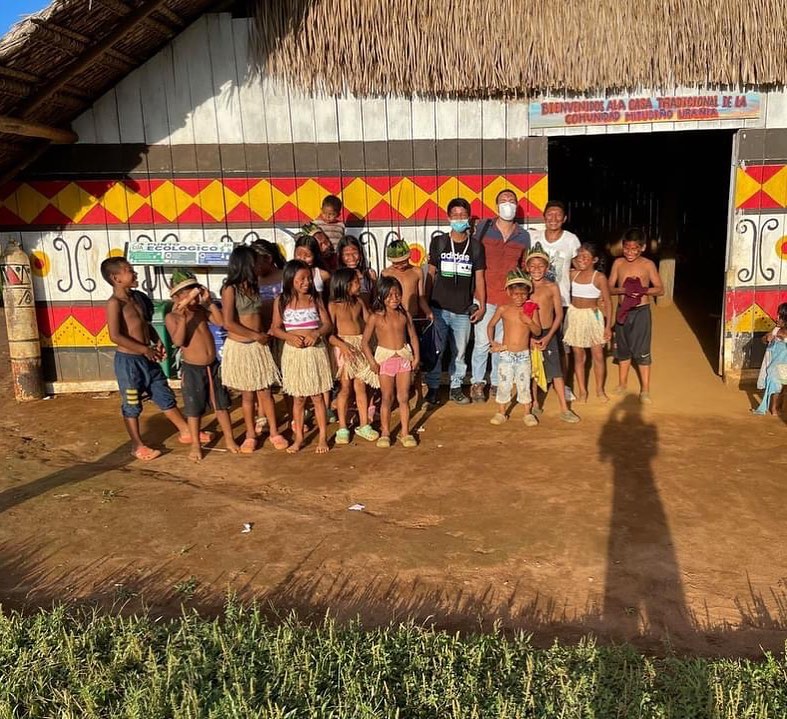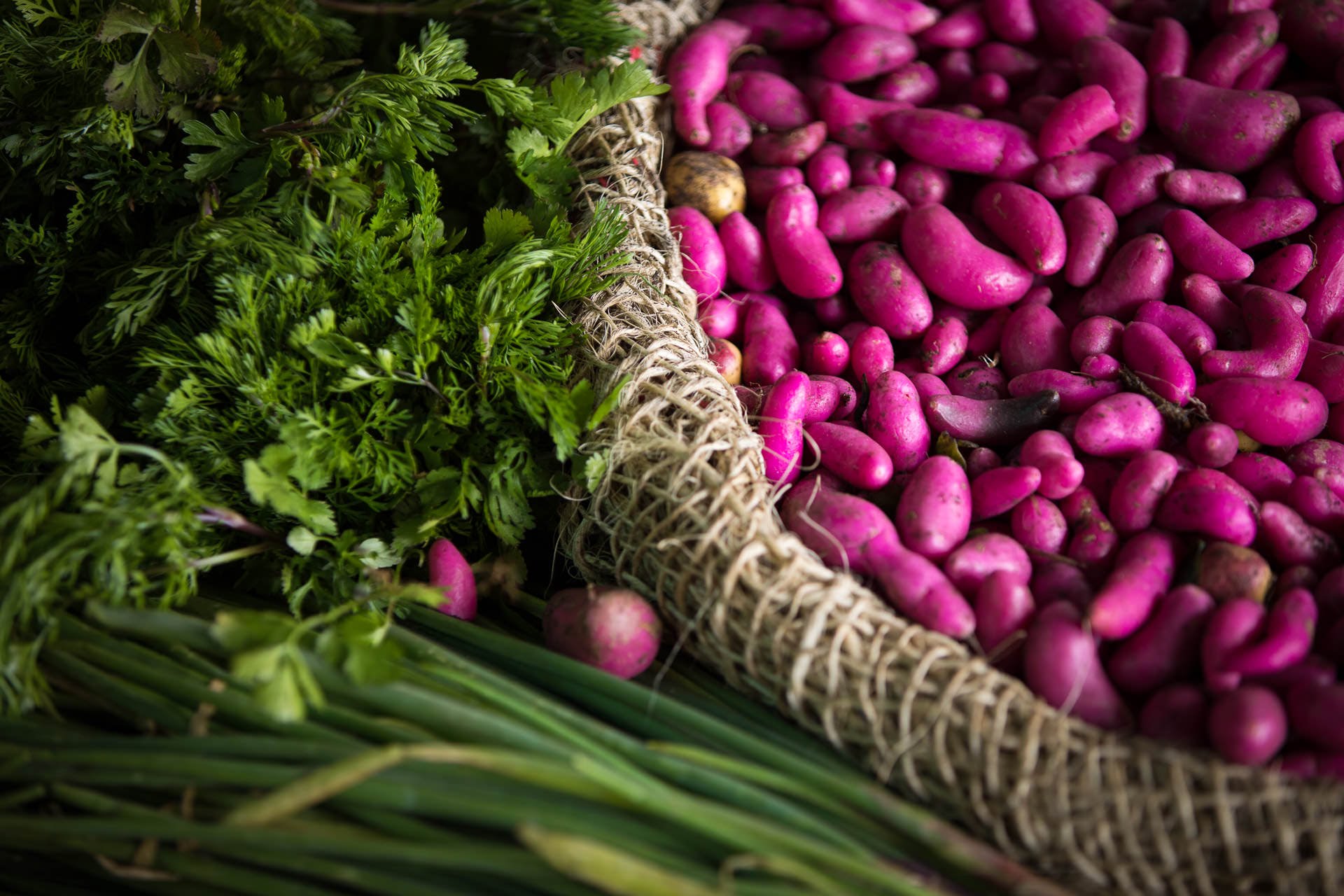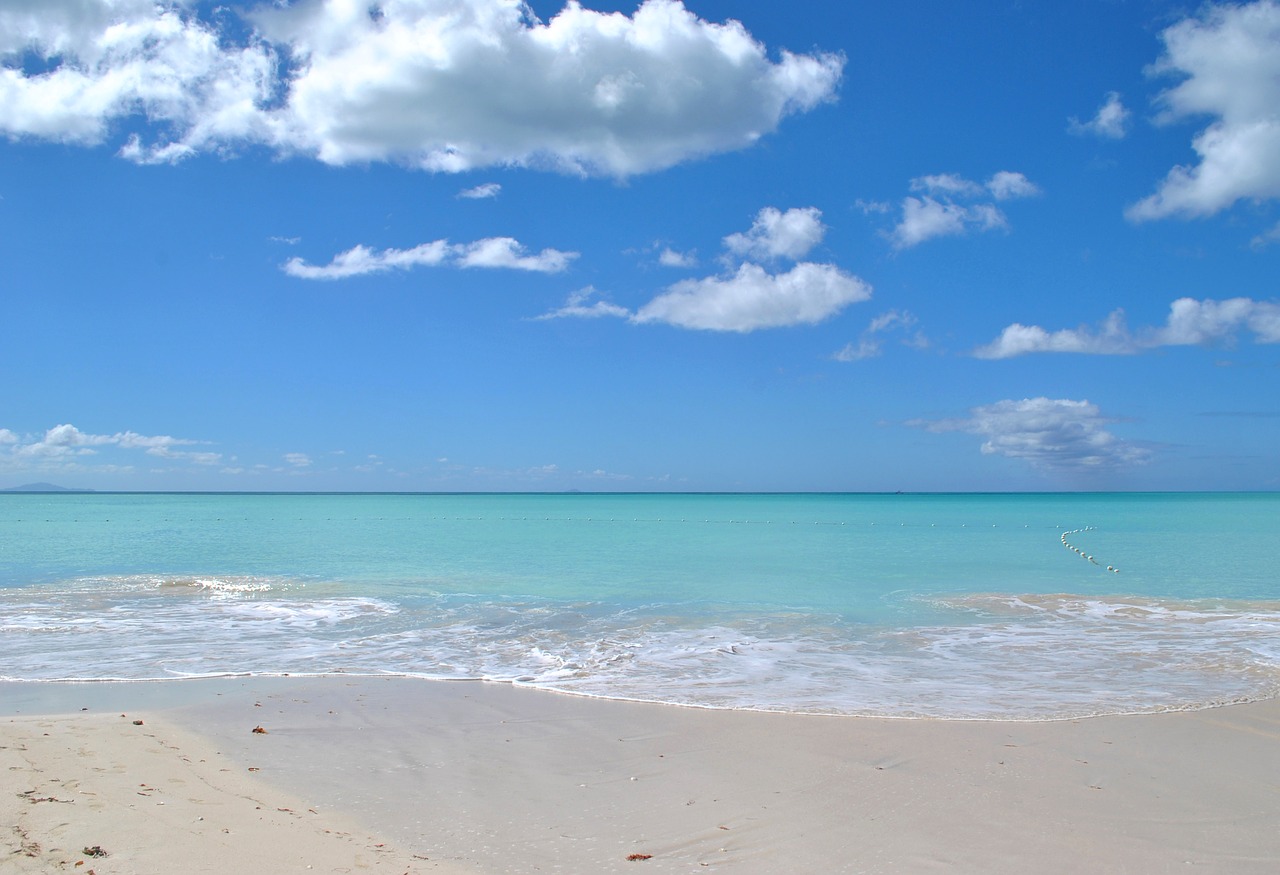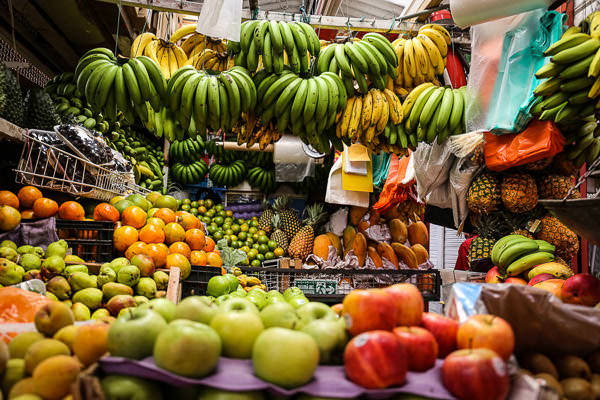Discovering the natural treasures of Colombia
There are 59 national natural parks in Colombia, representing more than 10% of the territory, from the Andean mountains to the Amazon rainforest. In this section we offer you an overview of these protected areas, refuge of an exceptional biodiversity and breathtaking landscapes. Discover all there is to know, all the practical information on the national natural parks of Colombia, from the most famous to those still unexplored.
NNP Cueva de los Guácharos (1960)
This cave is named after the rare birds that live in it. Surrounded by virgin forest typical of the Antioquia region, in the heart of the transition zone between the departments of Huila and Caquetá, the Cueva de los Guacharos is a very little frequented area, which can be discovered during a beautiful trek of 1, 2 or 3 days. Discover in this park waterfalls, natural pools, thousand-year-old caves and forest landscapes. More information about Cueva de los Guacharos.
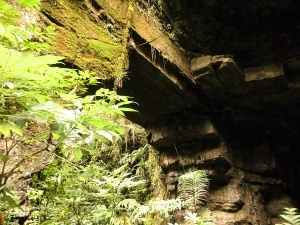
NNP de la Sierra Nevada de Santa Marta (1964)
The Sierra Nevada de Santa Marta is the highest coastal massif in the world, sacred land of the indigenous Koguis communities, on the edge of the Caribbean Sea. Tropical forest at its foot and mountainous in altitude, the Sierra Nevada enjoys an incredible biodiversity, as much by its fauna as its flora. Its maximum altitude reaches 5.775m. Its access is difficult in some places, which makes this place magical, considered as the heart of the world by the local communities. Many treks can take you to the top of the mountain, like Cerro Kennedy for example. For more information about La Sierra Nevada de Santa Marta.
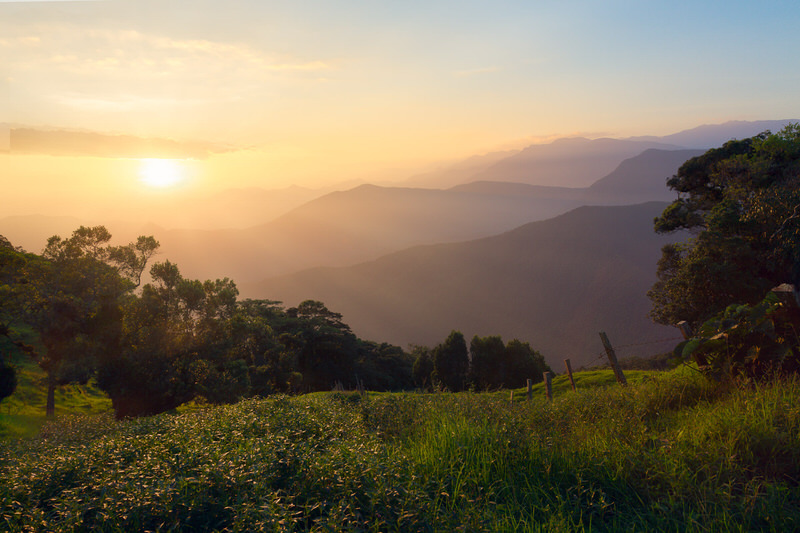
Vía Parque Isla de Salamanca (1964)
The Salamanca Island Park was declared an area of global importance (Ramsar) and was later integrated into the UNESCO Man and Biosphere program. It is composed of marshes, forests, as well as part of the Magdalena River, which lies between Santa Marta and Barranquilla.
In this Park, there are 9 classes of amphibians, 35 species of reptiles, 140 species of fish, 98 aquatic invertebrates and 199 species of birds. There is also a great variety of vegetation: the red mangrove, the white mangrove and the silver oak. The variety of landscapes composed by marine and coastal ecosystems, mangroves and swamps, makes the Park a very pleasant place. More information.
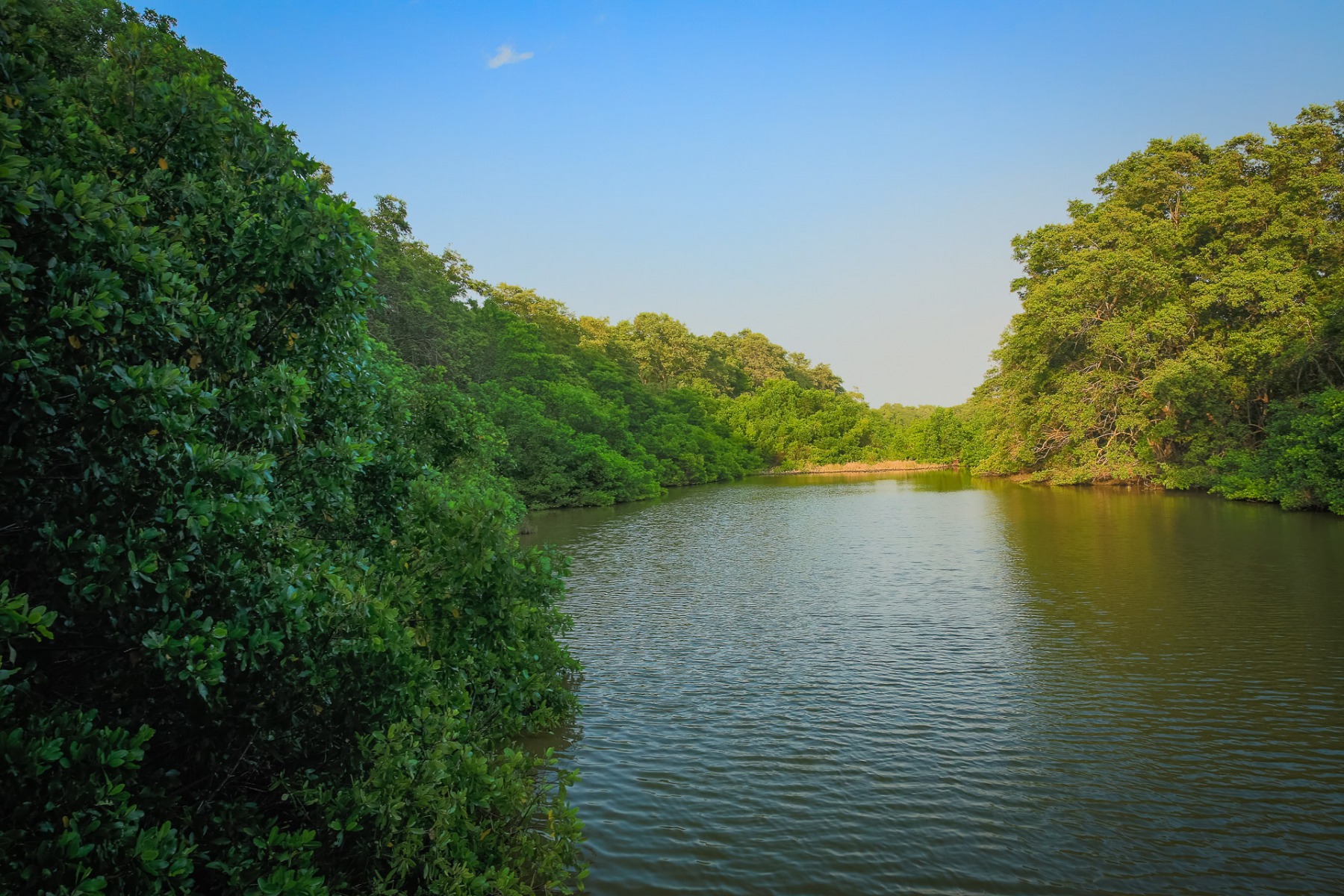
NNP des Farallones de Cali (1968)
The Farallones National Park is located in the western mountain range and covers more than 200,000 hectares. This magnificent park with its Andean forest is a refuge for more than 540 species of birds. Between 200 and 4100 meters of altitude, this park offers varied landscapes and ecosystems with a very rich flora. You can find the spectacled bear, the anteater, monkeys, eagles and marsupials. You can camp inside the park and there is a visitor center.
Puracé NNP (1968)
The Puracé National Natural Park, located 45 km from Popayán, covers 83,000 hectares. It is a volcanic chain inhabited by the majestic Andean Condor, with volcanoes with snow-capped peaks, countless lagoons, a large quantity of waterfalls, thermal waters and a wide variety of fauna and flora. It is part of the Andean belt which was declared a biosphere reserve in 1979 by UNESCO. A 5-hour hike allows you to reach the Puracé volcano, at an altitude of 4750m.
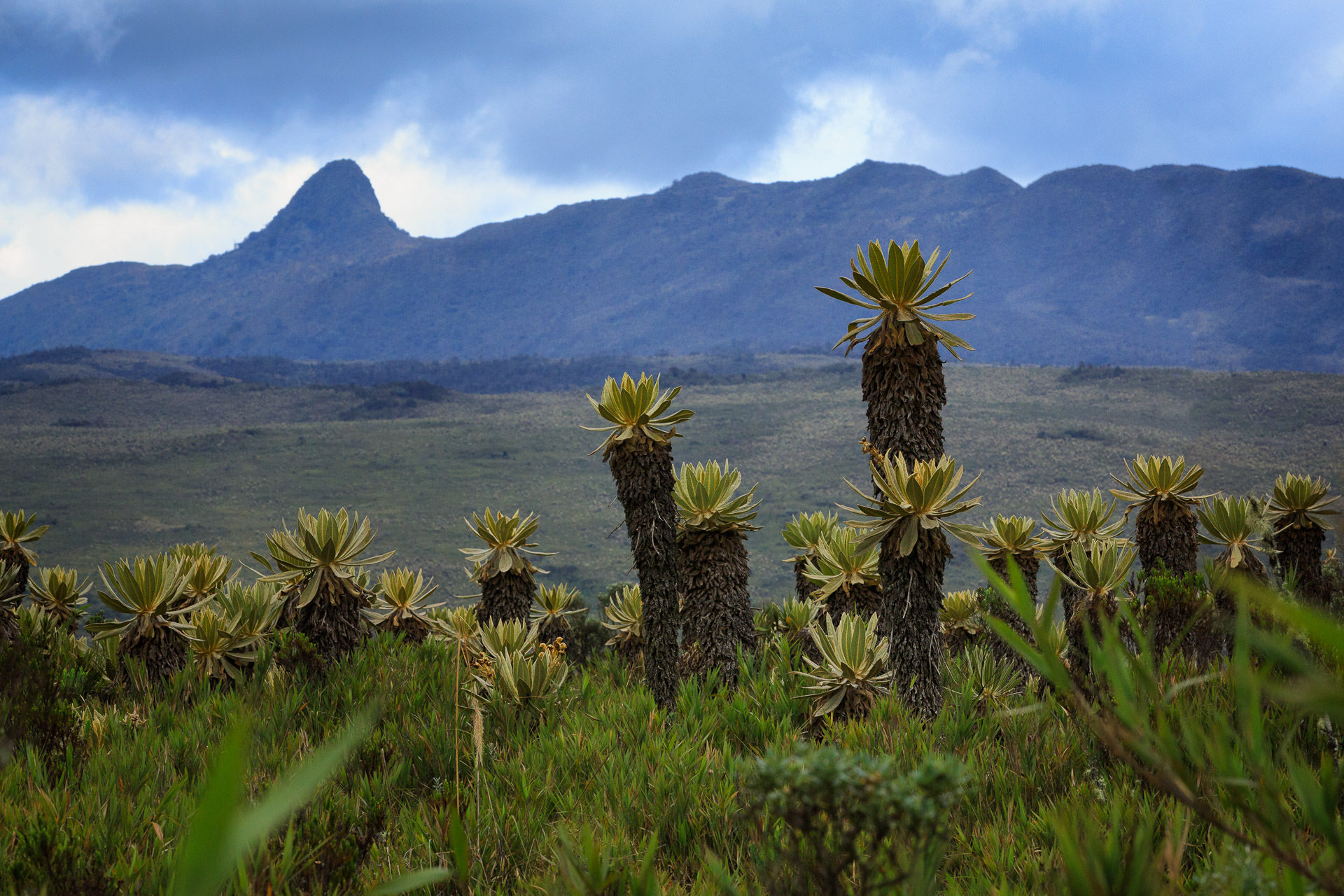
Tayrona NNP (1969)
Tayrona Park is probably the most famous and most visited natural park in Colombia, on the edge of the Caribbean Sea, between tropical jungle and paradisiacal beaches (often the most beautiful beaches in Colombia). The park is divided into several regions whose altitude varies from 0 to 900 meters. Of the 15,000 hectares, 3,000 include the marine region. Due to its great diversity, the park offers many leisure activities, from hiking to scuba diving.
The park is home to many animals such as the lynx, and several breeds of monkeys (howlers, titi, capuchins). Birds (toucans, lone eagle …) and more than 70 species of butterflies. Reptiles (caimans…). Underwater species, sponges, crustaceans, mollusks, corals and multicolored fish. For more information on the activities to do in the Park, visit the following articles:
Tuparro NNP (1970)
This natural national park was declared a biosphere reserve in 1982 by UNESCO. In the heart of the Vichada region, close to the Venezuelan border, the park is the territory of the Sikuanis Indians whose number is reduced today to a little less than 30.000 individuals. The landscapes of this park are magnificent. Typical of the Guyana Plateau, it has savannahs, forests, rocks that rise to the sky, and numerous rivers and waterfalls. Tuparro Park is home to 5 species of primates, 320 species of birds, 26 species of fish and 17 species of reptiles. The area is accessible by boat or 4×4. However, the park remains difficult to access and it is necessary to have the services of a guide to carry out this expedition. More info about Tuparro Park.
Serranía de la Macarena (1971)
This mountain range of the llanos region is located in the department of Meta. The Park protects more than 6,000km2 of the 10,000km2 of the area. In the Serranía de la Macarena we find the famous river of five colors, Caño Cristales, one of the most beautiful rivers in the world. Formed by waterfalls and surrounded by typical llano vegetation, discover this river colored by prehistoric red, yellow, blue and green plants. It is an enchanting spectacle. For more information visit the following websites:
- Travel guide : Caño Cristales.
- Caño Cristales, the river of 5 colors : Activités
- Discover our 3-day stay in Caño Cristales

Los Nevados NNP (1973)
With three snow-capped peaks that rise above 4,800 meters above sea level, Los Nevados National Natural Park covers 58,300 hectares. The snowy peaks of El Ruiz, Santa Isabel and Tolima reach up to 5,300 meters of altitude. The incredible fauna, unique in the world, such as the red-fronted toui or the paramo hummingbird, as well as its flora, which is home to an extraordinary ecosystem, make this park an essential place for the preservation of life and endemic species in Colombia. The population of the park is very communitarian and it is easy to find a place to sleep in the homes of local people who welcome you with open arms.
- Discover our 3 days trek Los Nevados from Salento
- Discover our expedition trek of 4 days attempt to climb the Tolima glacier
- Discover our 4 days trek to the Tolima glacier
Los Katíos NNP (1973)
Los Katios National Park is located near the border with Panama, in the northwest of Colombia. This beautiful park, with low hills, plains and tropical forests, covers more than 72,000 hectares. It is the refuge of many endangered species and endemic plants, where you can also find many ecosystems, from swamps to flood forests. Until 2015, this natural site was classified as endangered by UNESCO, due to deforestation but also to hunting and illegal fishing. It was also an area of armed conflict. Now, the site is much better protected against all these attacks, and it was removed from the list of sites in danger.
Amacayacu NNP (1975)
Amacayacu National Park was created in 1975 and covers a distance of over 293,500 hectares. Amacayacu means “river of hammocks” in Quechua, and is a sacred land where the indigenous Ticuna communities live. Amacayacu Park is above all an extremely rich natural reserve, home to more than 5,000 species of plants, 468 species of birds and 150 species of mammals. In the middle of the Amazon jungle, this rainforest is a paradise for ecotourism and animal observation lovers. The number of reptiles is quite important, from caimans to anacondas, turtles and boas. It is also the ideal place to see pink dolphins and manatees in a pristine jungle landscape.
Nevado del Huila (1977)
This volcano perched at 5.700 meters, in the heart of the Andes, is the highest active volcano in Colombia. Reserve of the biosphere of UNESCO, it is in Andean landscapes that this superb volcano is nestled, in the department of Huila, in the southwest of Colombia. Snowy peaks and Paraños, the volcano of Huila is of a rare beauty. However, visiting it is very complicated. Around the volcano live indigenous communities of the department of Huila and Tolima.
Chingaza NNP (1977)
Chingaza National Natural Park is located 1.5 hours northwest of Bogota in the eastern cordillera of the Andean region. It covers 76,600 hectares. It is an area of high biodiversity, with approximately 38 species of plants. The park contributes to the preservation of vulnerable species (the Andean condor, the spectacled bear, the tapir, the puma, the jaguar, among others…). You can also find frailejones, a typical shrub of high altitude, above 3,000 meters, as well as absorbing swamps and numerous lakes. For more information, visit Chingaza Park: Travel Guide.
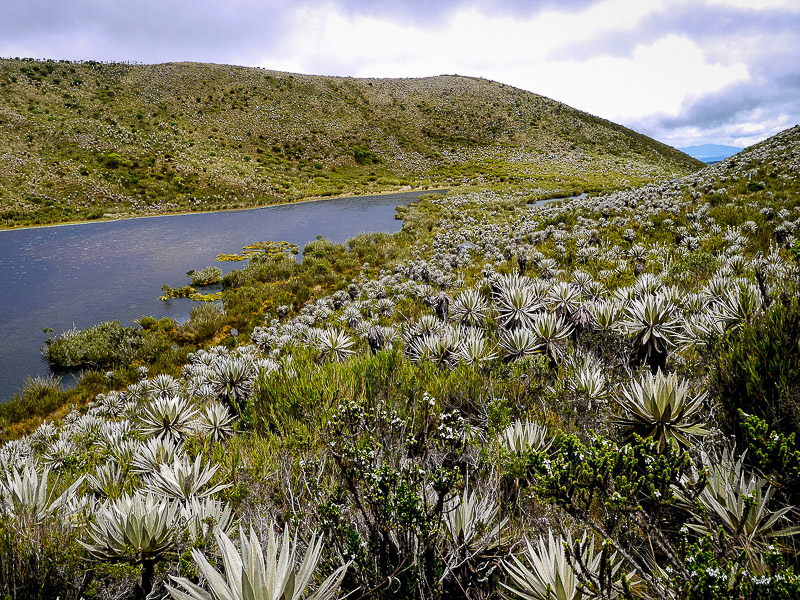
Sumapaz NNP (1977)
At the gates of Bogotá, the Colombian capital, the Sumapaz Park extends over 780 km2. Its maximum altitude reaches 4.300m. The landscapes of Sumapaz Park are typical of the Andean highlands, with the famous Paramo ecosystem, lakes and Andean forests. It is home to a rich biodiversity, including a large number of species of high mountain flowers. It is a pleasant natural park for a day trip, far from the city and close to nature.
Sierra Nevada del Cocuy NNP (1977)
Silent summits, glaciers and eternal snow, high altitude lakes with multiple colors and surprising vegetation: in the wild beauty of these remote territories still live some mountain people and farmers. The Cocuy National Park covers an area of about 306,000 ha with average altitudes of over 4,000 m and snow-capped peaks up to 5,350 m. The fauna, on the other hand, includes spectacled bears, pumas, white-tailed deer and the famous Andean condor that represents the symbol of Colombia. For more information, visit Sierra Nevada del Cocuy: Travel Guide.
Sanctuary of fauna and flora of Iguaque (1977)
This sanctuary can be visited during a hike of about 8 hours, level of difficulty quite high with an important difference in altitude. A winding track leads to the Lake of Iguaque, located at 3 800 m of altitude. The Muisca civilization was born here according to the legend. The surrounding vegetation is characteristic of the Paramo regions. The park is currently regenerating and recovering from a serious fire that devastated it in 2010. Iguaque can be reached by car or by bus from Villa de Leyva in the direction of Arcabuco. Ask to get off at Casa de Piedra, the beginning of the ride. For more information, visit What to do around Villa de Leyva.
Coral Islands of Rosario and San Bernardo NNP
The Parque Nacional Natural Corales del Rosario y San Bernardo is a marine park of more than 120.000 hectares. It shelters and protects numerous underwater ecosystems, including coral reefs and many colorful fish. Bathed in turquoise waters, the archipelagos of Rosario and San Bernardo can be reached respectively in 45min and 2h by boat from Cartagena de Indias. It is an ideal place for scuba diving and snorkeling, to observe an extremely colorful marine fauna. For more information, visit Rosary and San Bernardo Islands: Travel Guide.
Wildlife Sanctuary of the Great Marsh of Santa Marta (1977)
The Ciénaga Grande de Santa Marta is located in the north of Colombia in the department of Magdalena. It covers an area of 26,810 hectares.
This place is composed of lakes, swamps, mangroves and canyons. It is a very important place for nature, since it has the largest complex of lagoons in Colombia and more than 100 mangroves! It is also a refuge for migratory birds that come from North America. The mangrove ecosystems help in different phases of the life cycle of mollusks, crustaceans and fish as well as the development of the rest of the fauna and flora.
Among the most representative species are the Cariblanco monkey, manatees, coypu, a variety of bats, caimans, iguanas and exotic birds, such as snake birds or the great blue heron. For more information, visit Cienaga grande: Travel Guide.

Macuira NNP (1977)
In the northwest of the La Guajira peninsula is the Serranía de Macuira, which owes its name to the ancestors of the Wayúus: the Makui. Inside the refuge of the Wayuu is a park of 25000 hectares, the Macuira National Park. It is composed of a mountain range of 500 meters high and the highest point is Cerro Palúa, at 865 meters. Within this semi-desert, microclimates form oases that resemble tropical forests. Macuira’s isolation gives it an interesting flora and fauna and a notable wildlife, which includes the Cardinalidae, as well as 15 species of snakes, such as the coral snake. For more information about the area, visit La Guajira: Travel Guide.
- Discover our 4 days stay in Guajira Macuira
- Discover our 3 days stay in Guajira in 4×4
- La Guajira : les 6 must see
Los Flamencos Wildlife Sanctuary (1977)
20 kilometers from Riohacha, in the department of Guajira, is the sanctuary of Los Flamencos. It is a reserve of 7,682 hectares with mosaics of lagoons, dry forests and swamps. There are 185 species of birds (80% of which are migratory birds), such as eagles and the roseate spoonbill. In addition, four species of sea turtles come here to lay their eggs. We advise you to come when the park has the most pink flamingos, the show is breathtaking. For more information about the area, visit La Guajira: Travel Guide.
- Discover our 4 days stay in Guajira Macuira
- Discover our 3 days stay in Guajira in 4×4
- La Guajira : the 6 must see
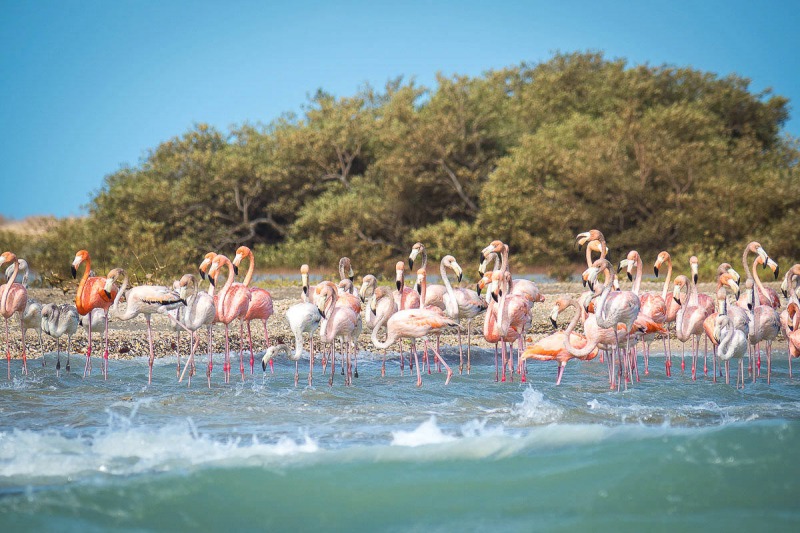
Galeras (1986)
The Galeras Natural Park is located in the heart of the department of Nariño, in the south of Colombia and only 8 km from the center of the city of Pasto. Its main site of interest: the Galeras volcano. This active volcano perched at 4.267m of altitude is still little known by tourists and is accessible by foot or by car. It is a high place for sports activities like mountain biking or paragliding. For more information about the area, visit San Juan de Pasto and Nariño: The 7 best activities.
Utría NNP (1987)
Utria National Natural Park is a unique and magical place. Home to rainforest, coral reefs, estuaries, mangroves and the ocean, the Park has one of the most diverse ecosystems and one of the greatest biodiversities in the world. However, it is also one of the most fragile ecosystems on the planet.
The park covers 54,300 hectares. On one side you can see mysterious mountains covered by tropical jungle, partly hidden by fog. On the other side, you can see the ocean. Sea turtles and humpback whales return every year to these warm waters, and the area is regularly visited by rare bird species. Utria’s coastline is rocky and narrow, consisting of coral reefs with very few sandy beaches. The jungle almost reaches the sea shore.
The Park’s rich demographic is made up of African-American and mestizo communities, as well as ancestral indigenous communities, such as the Embará and the Kunas. For more information, visit Utria Park.
National Natural Park of Gorgona Island (1983)
This beautiful island is a paradise for lovers of wilderness and diving. Gorgona Island is located 46 km from the village of Guapi and has an area of 24 km2. The National Park covers 61,687 hectares, 97% of which are coral reefs. In the past, this island off the Pacific coast was inhabited by the pre-Columbian Tumaco-La Totita communities. The island of Gorgona is now the refuge of many animals such as iguanas, endemic snakes, capuchin monkeys and marine animals such as sharks, whales, dolphins, turtles. To visit this island wrapped in virgin forest, the least rainy months are February and March. Count 1h30min by boat from Guapi and 3h30min from Buenaventura.
NNP Old Providence McBean Lagoon (1995)
It is in the island region, right next to Providencia Island that you can discover this mainly marine park. The archipelago has a rich marine biodiversity, which is why it has been declared a Marine Flora Biological Reserve, and the Old Providence McBean Lagoon National Natural Park has been created to protect this incredible biodiversity. It is the ideal place to practice diving and snorkeling to observe fish of all colors in a water of seven colors. It is also possible to observe terrestrial fauna, such as numerous reptiles or even birds, marine or not. For more information visit San Andrés and Providencia travel guide.
Malpelo Wildlife Sanctuary (1995)
Malpelo Island is a sanctuary of fauna and flora, a marine park classified as a world heritage site by UNESCO. Located 490 km off Buenaventura, it is one of the best spots in the world to practice scuba diving, to meet hammerhead sharks and other species of sharks and impressive underwater species.
In the waters of Malpelo, discover sea bats, sea eagles, manta rays, leopard, green cod, dolphins, turtles and many others. Warning: to dive in Malpelo, you must have a sufficiently high level and be used to diving because the walls of the island go down to more than 4,000 meters deep. For a stay in Malpelo, count 8 days with accommodation on the boat
Otún Quimbaya Wildlife Sanctuary (1996)
The Otún Quimbaya wildlife sanctuary is located in the department of Risaralda, in the heart of the coffee region. It is the ideal place to observe numerous wax palms. Emblematic of Colombia, these unique palms can reach 60m in height. If you go to Otún Quimbaya, you will surely have the chance to observe many species of birds, mammals and flowers. Also found in this rainforest are rivers, impressive waterfalls such as the Pastaro Cascada and volcano craters. For more information visit Santuario Otún Quimbaya.
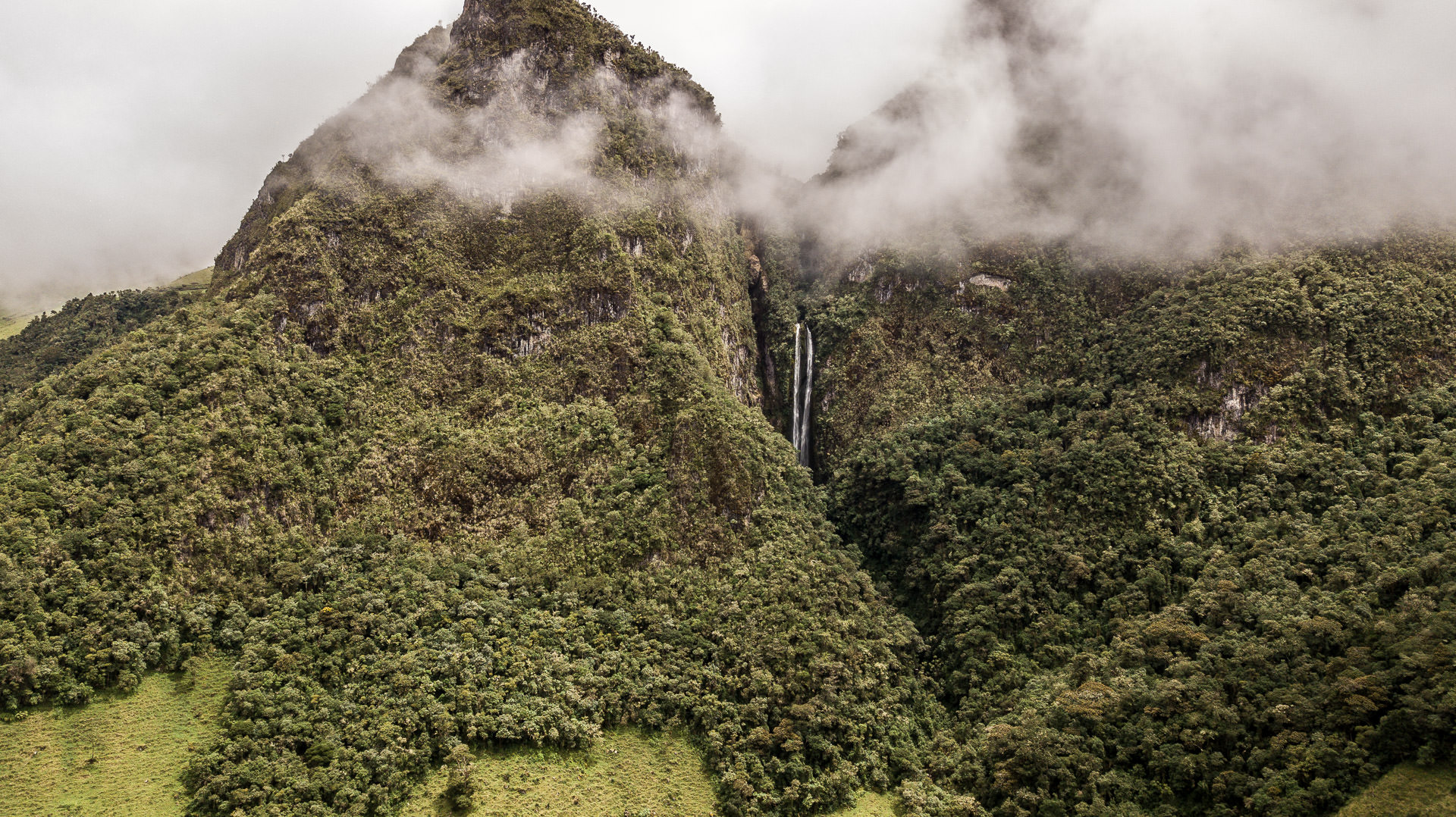
Serranía de Chiribiquete National Park (1989)
Also called “The Maloca of the Jaguar”, Chiribiquete National Park was declared a UNESCO World Heritage Site in 2018. It covers 2.7 million hectares. It is the park which shelters the greatest biodiversity in the world, refuge of the Jaguar in particular. There are also many prehistoric and pre-Columbian relics. Land of Tepuys (tabular mountains), there are more than 75,000 rock paintings in the park, dating back to more than 20,000 years before Christ. These paintings have been discovered in more than 60 shelters that line the sandstone rocks and plateaus. It is a sacred land for the indigenous communities of the region.
The other national parks of Colombia
Here is the list of other national parks in Colombia, less known but equally important to the preservation of the rich Colombian biodiversity.
- Parc national naturel Las Orquídeas (1973) : region of Antioquia, 3.200.000 hectares
- Las Hermosas National Park (1977): Cauca Valley, 125,000 hectares
- Parc national naturel de la Cordillera de los Picachos (1977) : Cordillère orientale des Andes, 4.447.000 hectares
- Pisba National Natural Park (1977): Boyacá, 45,000 hectares
- Tamá National Natural Park (1977): Norte de Santander, 48,000 hectares
- Sanquianga National Nature Park (1977): Pacific Coast, 80,000 hectares
- Paramillo National Park (1977): Eastern Cordillera of the Andes, 460,000 hectares
- Munchique National Park (1977): Cauca Valley, 44,000 hectares
- Sanctuaire de faune et de flore de Los Colorados (1977) : Bolivar, 1.000 hectares
- Sanctuary of fauna and flora of the island of La Corota (1977): San Juan de Pasto, 8 hectares
- La Paya National Park (1984): Putumayo, 422,000 hectares
- Cahuinarí National Park (1987): Amazonas, 57,500 hectares
- Parc national naturel de Tatamá (1988) : Chocó, Risaralda, Cauca, 51.900 hectares
- Zone naturelle unique de Los Estoraques (1988) : Norte de Santander, 56.200 hectares
- Nukak National Nature Reserve (1989): Vaupés, Guaviare, 855,000 hectares
- Puinawai National Nature Reserve (1989): Gauinía, 1,092,500 hectares
- Tinigua National Natural Park (1989): Meta, 2,017,850 hectares
- Catatumbo Barí National Natural Park (1989): Norte de Santander, 1,581,000 hectares
- Guanenta Alto Río Fonce Wildlife Sanctuary (1993): Santander, Boyaca, 10,400 hectares
- Río Puré National Park (2002): Amazonas, 999,800 hectares
- Parc national naturel Alto Fragua Indi-Wasi (2002) : Caquetá, 68.000 hectares
- Sanctuaire de faune et de flore “El mono Hernández” (2002) : Bolivar, 3.800 hectares
- Selva de Florencia National Park (2005): Caldas, 1,060 hectares
- Parc national naturel de la Serranía de los Yariguíes (2005) : Santander, 78.800 hectares
Contact a Travel Agent now
Design the trip of your dreams today with one of our country experts:


